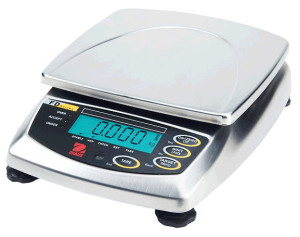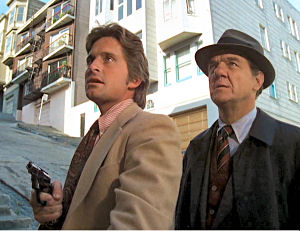Recently
sports apparel brand Under Armour acquired MyFitnessPal for something ridiculous like 400 million dollars.
For those that don’t know, MyFitnessPal is one of many health-tracking apps that allow users to keep an online food journal, so your daily calorie intake (and how many calories you have left to “spend” on ice cream) is as close as your smart phone.
Now while this lit a fire under the usual limp-dick alarmist bloggers– “a clothing company is collecting personal health data! What about our privacy?” – it did reinforce what fitness people have known for years: when you measure (and control) what’s going into your mouth, health & weight loss outcomes improve.
Now it’s not perfect. The actual calorie & macronutrient counts on many “whole” foods (the one’s you’re supposed to eat more of) can vary immensely; I’ve read by as much as 25%.
Worse still, the easier it is to measure the macros, the less “nutritious” the food typically is – i.e., a “large apple” versus that Fruit Roll-Up that’s been in the back of your pantry since ’99 and is still as “fresh” as the day it rolled off the assembly line.
Then there’s the whole measuring error thing. I fail miserably here.
It’s not for lack of technology — I have two food scales on my counter: one just weighs stuff, the other has a programmed macro database of over 5000 foods, including prepared dishes like “Kidney Pie, English Pub Style – 844 calories.”
It even offers condescending remarks: “Protein Pancakes for breakfast? Again? Not one for variety, are we? Hate to hear about the bedroom menu.”
What it doesn’t address, however, is that at the end of the day I am basically lazy — and despite having so many measuring spoons and cups that my cupboard looks like a poorly played game of culinary Jenga, I still just haphazardly dole out my morning oatmeal with a coffee cup and get on with my goddamn day.
And quite frankly, as long as my food choices are good — yes, as in “clean” — I’ve never had to be that anal to get in shape anyway.

But for all its faults, measuring intake works. If the average person just focused on controlling the quality and quantity of the calories they take in versus relative trivia like “when you go to Walmart, park at the end of the lot” they’d be way further along.
It reminds me of that old personal trainer joke: “What do you call a guy who ignores his diet but brags about how many calories he burned on his elliptical machine?”
Fat.
Of course the real magic happens when you do both — control intake and expenditure.
To lose fat, bodybuilders and physique athletes typically use a “ladder” approach (gradually decrease calories while increasing cardio).
However, I recently happened upon a decade-old article by my friend Dr. John Berardi of Precision Nutrition. JB talked about helping a guy lose fat by ramping up his calorie expenditure every week (through cardiovascular exercise), while at the same time increasing calories weekly to offset any weight loss. (This would later form the basis of JB’s G-flux series).
After a month or two, when the trainee was eating a ton and doing upwards of an hour of cardio a day, JB “pulled the rug out” by dropping calories to maintenance while reducing the cardio to something more manageable.
The result, he says, was a fast drop in bodyfat; especially at first, until the metabolism “caught up” and accounted for the reduction in energy intake.
Now exercise more, eat more isn’t new. It’s also something that I’ve been toying with myself lately; specifically weight training twice a day while eating higher carbs and calories. It feels great, dare I say like a real athlete, though I’m curious to see how I’ll respond in a month or so when I “pull the rug out” from my own diet and change some of these weight training sessions to basic cardio.
But it also got me thinking how people tend to “pigeon hole” exercise.
Lifting weights, to guys, is always about getting “bigger and stronger.” But especially bigger. And for many women it’s to “get more defined” or worse, “toned.” Translation, get smaller.
Cardiovascular exercise, on the other hand, is to “burn bodyfat,” while maybe improving your cardiovascular health along the way.
And running hills, like Karl Malden and Michael Douglas chasing a bad guy in The Streets of San Francisco, is supposed to make you “more awesomer”.

But it’s foolish to get stuck on these labels.
Ladies, you can easily turn weight training into a hellacious fat burning workout.
Guys can too — you don’t even need to go super high reps or start inventing circus exercises. Just use basic lifts with short rest intervals and slow eccentrics. Or stack several exercises together into a complex. Throw in some strongman work and have fun.
And although they certainly work well, you don’t “need” intervals or hill sprints to get into shape, nor is cardiovascular exercise a “requirement” to burn fat. How much cardio did Arnold and the gang do back in the day? Unless chasing waitresses around Santa Monica qualifies.
On the flip side, what about using a little cardio to help gain muscle? Thirty minutes of light walking will get you out of a recovery hole faster than lying on the couch wondering why you crushed yourself so hard the day before. It even improves insulin sensitivity. So there.
Maybe the message is, none of this is cut and dried?
That while there are best practices for every goal, there are still many different ways to challenge or condition your body to become bigger, stronger, leaner, and better.
So listen to experts, the real ones, especially the ones that have been there before, yet don’t be afraid to open your sails and leave the safe harbors of what you think you know.
As Dave Tate says, figure shit out for yourself.
Just remember, if you’re not losing fat, it’s your fucking diet okay?
Eat less shit. You owe me 400 million.

